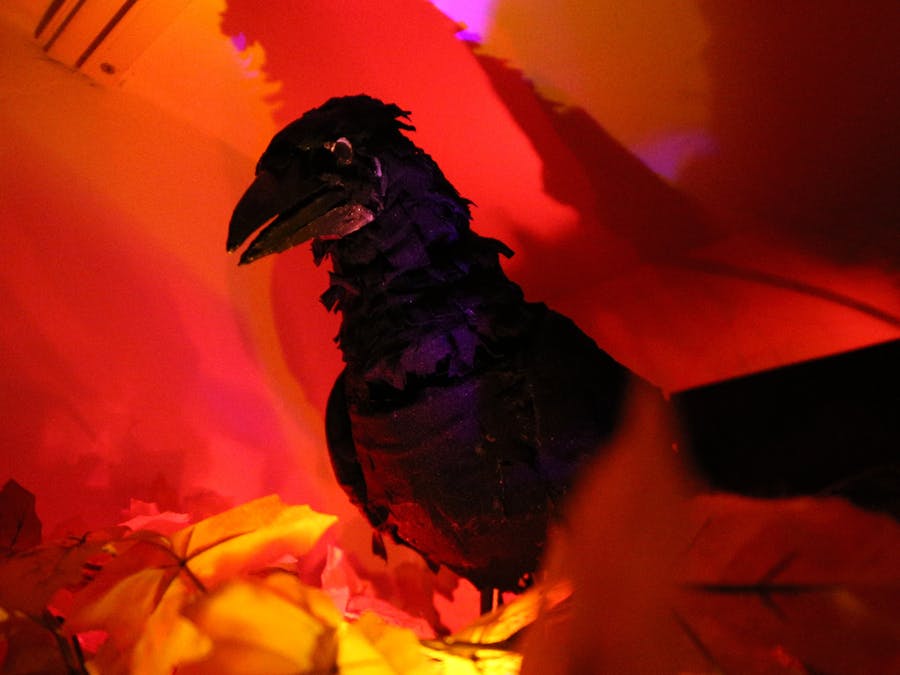I have always been fascinated by haunted houses and dark rides ever since and loved making decorations for our Halloween parties. But I always wanted to make something that moves and makes sound - so I built my first ever fully automatic animatronic: a talking raven bird that sits on a shelf and greets our party guests.
I started with doing rough sketches and made some basic designs in 3d. At this point I was having no idea yet how to do solve the electronics.
I knew that the body had to be lightweight to not over stress the servo motors, so I made the body parts out of plywood and paper. And the end of the board I built a control box for all motors and electronics.
Placing most of the motors outside of the bird gives me easy access to all motors - only the small motor for the beak had to fit directly inside of the small head.
While looking for a solution for the controls I quickly stumbled upon the Arduino world. Despite having no background in electronics it just took me a couple of tutorials and readings on the internet to be able to write my first lines of code to control LEDs, servo motors and readout a motion sensor. For the sound I decided to use the MP3 trigger. A Maestro controller is taking care of the six motors and I added a LCD display and shift register for lighting up LEDs.
Two passive infrared sensors and two ultrasound sensors feed the Arduino with informations of movement to sense people around the animatronic. I pre-tested the sequences of motion, lights and sound in Adobe Flash at 12.5 frames per second and than uploaded the animations into my own little engine on the Arduino. Every 80 ms it processes the next letter out of the strings and converts into commands for moving the body and the beak in sync with the sound and lighting effects.
Watch a video of the first beak animations with sound.
I wrote several sequences that include random motion (looking around), specific motion patterns and saying sentences. There is a physical switch to turn the talking to normal crow/raven sounds and a potentiometer to control how often it talks and makes noise.
I am very grateful that such accessible micro controllers like the Arduino exists and that there are so many helpful people that make great tutorials and share their knowledge online. I hope you like the project and I am looking forward to your feedback.
More images of the building process can be seen here.
VideoThere is a short making of with more videos of the bird in motion on YouTube.




_wzec989qrF.jpg?auto=compress%2Cformat&w=48&h=48&fit=fill&bg=ffffff)













_3u05Tpwasz.png?auto=compress%2Cformat&w=40&h=40&fit=fillmax&bg=fff&dpr=2)
Comments
Please log in or sign up to comment.